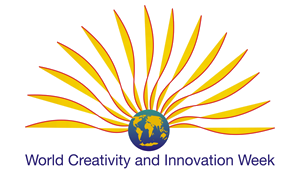Blown Away – where numbers rule, creativity suffers?
OMG. Microsoft’s internal corporate practices are creativity stifflers. Did you read the Vanity Fair article Microsoft’s Downfall: Inside the Executive E-mails and Cannibalistic Culture That Felled a Tech Giant? VF’s editor
Kurt Eichenwald interviewed staff and found…
“…a management system known as “stack ranking”—a program that forces every unit to declare a certain percentage of employees as top performers, good performers, average, and poor—effectively crippled Microsoft’s ability to innovate. “Every current and former Microsoft employee I interviewed—every one—cited stack ranking as the most destructive process inside of Microsoft, something that drove out untold numbers of employees,” Eichenwald writes. “If you were on a team of 10 people, you walked in the first day knowing that, no matter how good everyone was, 2 people were going to get a great review, 7 were going to get mediocre reviews, and 1 was going to get a terrible review,” says a former software developer. “It leads to employees focusing on competing with each other rather than competing with other companies.”
Talk about inner work life at that company. Have you thought about it much at your place? I mean, what do people think, feel and perceive in your organization? What’s nourishes their drive for creativity (assuming you want new ideas, fresh decisions and a new future)?
I’m reading The Progress Principle by Harvard’s Teresa Amabile and developmental psychologist Steven Kramer who, on pages 49 and 50, highlight four dimensions in environments where high performance is a must: creativity, productivity, commitment and collegiality. The Microsoft environment sure didn’t seem to support high performance from a people perspective, they used numbers as measures and guides without considering the impact on the people. This resulted in their losing talent to other organizations and in losing out to Apple over time.
Wow. Do you think that’s happening in other companies too? Do numbers always rule? If yes, then what about big data, hm? I’m so happy my work helps people in companies create, produce, commit to and collegially interact to enable new futures.
Marci Segal
FYI, Teresa Amabile is one of my favourite creativity researchers.
Related articles


We’ve never heard of “stack ranking” before this, but it’s been a bad thing for creativity at Microsoft. http://t.co/UaMwwJJc
Kind of like grading on the bell curve… remember that from college/university?
Ouf, obviously Microsoft management never heard about creative climate. Simply using Göran Ekvall’s 10 dimensions of creative climate, we could debate the value of this short viewed management practice by simply asking: How might ‘stack ranking’ contribute to fostering challenge, freedom, trust and openness, playfulness & humor, idea support, idea time, debate, dynamism & liveliness and risk taking while reducing conflict? Ekvall’s dimensions have a proven record with respect to their ability to differentiate organizations capable of innovative breakthrough, from those capable of incremental improvement and those that are stagnant. Usually those capable of innovation breakthrough score very high on Freedom, Dynamism, Risk Taking and Debate. I can hardly imagine that these dimensions are striving where ‘stack ranking’ is implemented. Hard to imagine that a glory and innovative future can build on this.
In time of turmoil, fast pace of change, increased competition and complexity, one would think that not nurturing a creative climate could pave the way to a rapid decline of Microsoft. However, I observe so often that the application of such short-viewed management measures may not necessarily be the primary cause leading to a rapid decline – it could be a reaction to a rapid decline currently happening. Unfortunately, rather than the management measure being a way to slow the decline, it may instead accelerate it.
Any big corporations on stock markets are more likely to chose short-viewed approaches like this to address performance issues under the pressure of actions holders. Their strategies may work on the short term but very unlikely on the long run…
Thanks Marci for sharing it
Lots of changes going on for sure Nicole. Wonder how it will all net out so that practices like the one mentioned in the article are considered ineffectual and archaic. Thanks for your comments.
Nicole, IMO this speaks to the two sides of creativity; survival or self-actualization (the two extremes of Maslow’s Theory). Your comment on the environment setting for creativity is spot on. The environments I have found conducive to either types of creativity are the middle of Maslow’s pyramid.
Its amazing to consider that companies like Microsoft automatically assume that 80% of their employee investment is wasted. By assuming 8 out of 10 employees are worthy only of a mediocre rating they are condemning their own recruitment, development, and leadership processes. But of course those are based on people so maybe they are just being consistant.
This is a very common review process. This is the norm in Verizon and HP.
It is also the norm for the US Military
Are you in the military?
I am retired from the Military